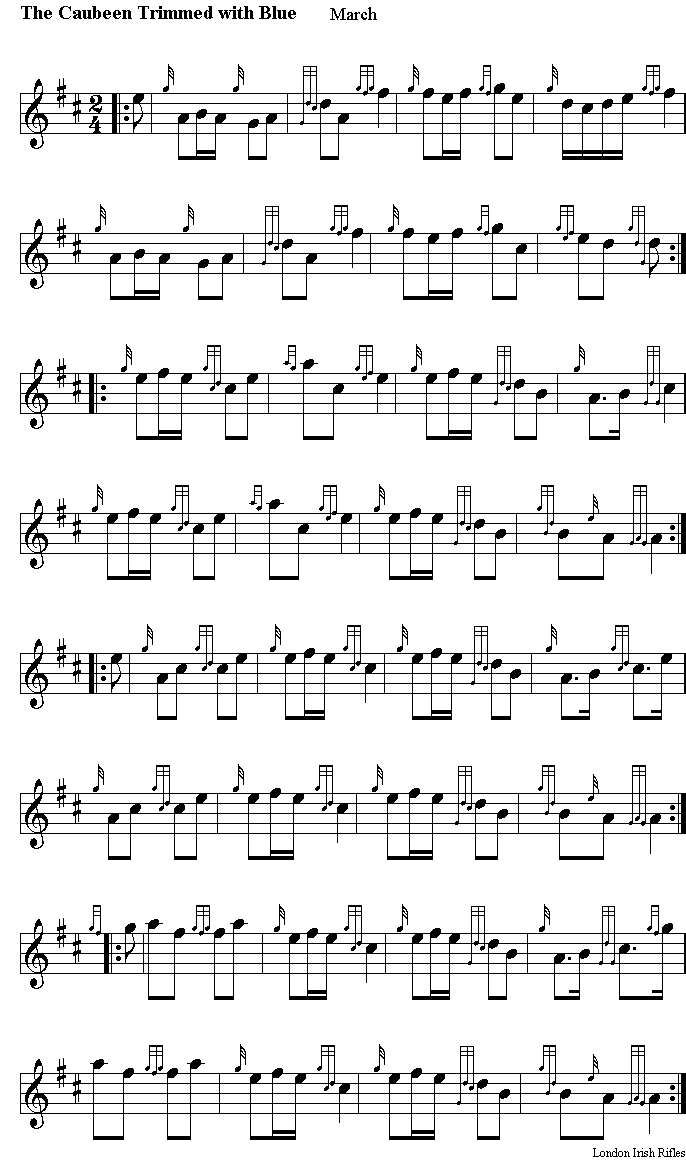The Caubeen Trimmed with Blue is the men’s breakfast and dinners march of the London Irish Rifles.
The caubeen is an Irish beret, formerly worn by peasants and adopted as the head dress of Irish regiments of the British and Commonwealth armies. The name "caubeen" dates from late 18th century Irish, and literally means "old hat". It is derived from the Irish word cáibín, meaning "little cape", which itself is a diminutive form of cába, meaning "cape". In the British and Canadian armies, the caubeen is officially known as the "Bonnet, Irish, Green".
In 1916, the British army regiment the Irish Guards established a pipe band. The pipers' uniform was a mix of standard service dress and bandsman dress, and also included a khaki bonnet, saffron-colored kilts and green hose. The khaki bonnet was named "caubeen" by the Guards pipers, and was similar to an oversized beret. Some sources have stated the Caubeen's similarity to the Scottish tam o' shanter, but the two are different in appearance - the tam o' shanter retaining much more of a 'dinner-plate' effect on the wearer's head, while the Caubeen resembled an oversized beret. The two had different quartermaster codes, meaning that the Caubeen was not simply a tam o' shanter with the toorie cut off, but a purpose-made article in its own right. In World War II, a number of British army regiments adopted both khaki and rifle-green caubeens as their headdress, replacing the GS cap.
Each regiment was distinguished by the feather hackle in their caps: the Royal Inniskilling Fusiliers wore their traditional grey hackles, the Royal Irish Fusiliers wore their traditional green hackles, the Irish Guards and London Irish Rifles were granted blue hackles, and the Liverpool Irish wore a blue-and-red hackle.
The modern caubeen is worn very high on the off-side (usually the left). The "sloping" difference was because the bonnets, which were based on the Balmoral of the time, were so big, and sloping fashions of the time were so "rakish", that Riflemen needed to slope to the left in order to see down the sights of the rifle.
In 1937, the London Irish Rifles extended the caubeen's wear to the entire regiment. In World War II, they were the only soldiers to wear the caubeen until 1944, when the 2nd battalion of the London Irish was serving with the Irish Brigade in Italy. The 2nd battalion of the Inniskilling Regiment started wearing caubeens made from Italian soldiers' greatcoats in January 1944, and the 6th battalion of their regiment soon copied them.


